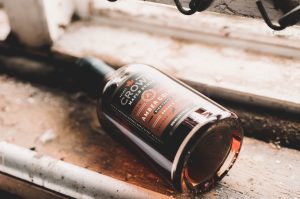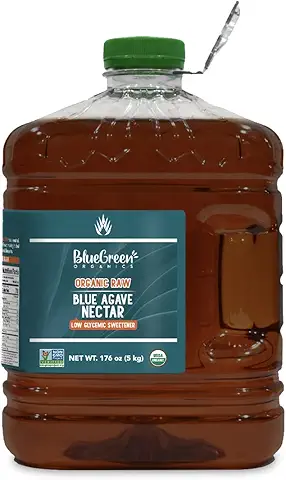Have you noticed how many different types of Agave you can buy in the store such as “raw agave,” “light blue agave,” “organic agave” and more? What is the difference between “raw agave” and all of the other types of agave syrups that are filling the shelves? Is there a difference, and if so what is it?

Difference Between Raw Agave and Regular Agave Syrup?
- Raw agave takes much longer to make, 4-5 days versus 24 hours for regular agave.
- It is less processed.
- Raw agave is not heated to high temperatures; where regular agave is heated up to 165 degrees F during processing.
- It retains a healthy pre-biotic substance called inulin. (It looks like INSULIN, but it is not)
- Inulin is a healthy pre-biotic that is not found in any other sweetener on the market except “raw agave.”
- As a matter of fact, large amounts of inulin are only found in the agave plant and the chicory root.
Generally, the LESS processed the agave syrup is, the darker in color it will be.
In regards to the other health benefits of Agave, both raw agave and light blue agave enjoy value of being a low glycemic sweetener that doesn’t spike your blood sugar.
How Is Raw Agave Made Versus Light Blue Agave?
In order to fully understand the difference between raw agave and regular agave syrup, one needs to understand how agave syrup is made.
Agave is made by harvesting the “pina” which is a “pineapple-like” core from which all the leaves originate. The “pina” is stripped of it’s leaves, washed, chopped finely and then soaked in purified water. After a thorough soaking, the fiber is removed and sent to make cloth and rope.
The water that remains is full of something called “inulin;” a complex carbohydrate that is often used as a “pre-biotic” by the natural foods industry.
What is a pre-biotic you might ask?
A pre-biotic provides the food for healthy pro-biotic bacteria to eat. Healthy bacteria in your stomach is very beneficial to have, which is one of the reasons why yogurt is such a wonderful super food.
With raw agave, this inulin water is allowed to incubate at 103 degrees for 4-5 days; a very slow and expensive process. (Raw agave manufactures can range in how hot they incubate their agave from 103 degrees up to 117 degrees.) Natural enzymes which occur in the plant, break down the complex carbohydrates into two mono-saccharides (simple sugars: fructose and glucose).
- With raw agave, the inulin water is simply allowed to incubate at a steady temperature, as if you were making yogurt.
- No enzymes are added, no chemicals are used and no further processing is done.
The last step in the process is the concentration of the nectar which occurs by the use of a vacuum to remove excess moisture (water).
My Conclusion Of Using Raw Agave Versus Other Types of Agave?
Based on my research, I was very hopeful that the agave sweetener may also have some unique health benefits due to the inulin, in addition to being a low glycemic sweetener.
In understanding how agave is made, there are significant differences in how it is processed. It seems like there should be huge difference in the health benefits. For example, raw honey has many health benefits versus processed honey and I assumed that raw agave would be the same.
However, I was a bit disappointed in not been able to find any supporting evidence to date that there is anything more than “trace” minerals and “trace” amounts of inulin left after processing; even in raw agave. In addition, when baking with agave syrup, the high heat will destroy natural enzymes and pre-biotics like inulin.
Is there a benefit of using raw agave versus regular agave syrup then?
In my humble opinion, YES! I still stock my shelves with raw agave, versus other types of agave. Raw agave is the least processed type of agave that is available. Typically less processing in any food is better. Perhaps additional information will be discovered to have more factual evidence of it’s benefits.
The less processing of any food, the better and raw agave is the least processed type of agave you can buy.
If you use raw agave in sweetening fruit, raw foods, or even in tea, you may also enjoy some health benefits of the inulin. If you bake the raw agave, who knows how much inulin and minerals are left when baked at a high heat.
Where to Buy Raw Agave?
I recommend ordering either raw agave or regular agave in bulk from a company called Wilderness Family Naturals.” Their raw agave is only heated to 103 degrees, versus some other companies that heat them to 117 degrees. You can also buy their agave nectar in bulk to save money.
About Agave:
Agave syrup comes from the agave juice that is taken from the Agave plant native to Mexico. The Agave plant is a very slow growing plant that is known for not needing pesticides to grow; one of it’s benefits. Agave has the well known health benefit of being a low glycemic sweetener and has a wonderful taste.


